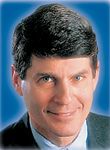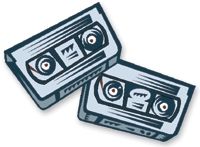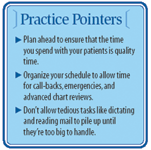Article
Ten tips for maximizing your time and revenue
I will leave the reimbursement issues to the expert, Ray Painter, MD, but I would like to focus on overhead and practice efficiency.

I will leave the reimbursement issues to the expert, Ray Painter, MD, but I would like to focus on overhead and practice efficiency. In the past, we enjoyed the luxury of seeing relatively few patients and enjoying very juicy, fat profit margins. Today, the situation is reversed. Many of us are seeing a lot more patients but also razor-thin profit margins. As a result, we are motivated to become more efficient.
This article provides 10 ideas to make your practice run more smoothly.

All of this can be solved by checking the charts the day before the patient arrives to see that all lab and x-ray reports are on the chart.
• Use a scribe. My accountant/practice consultant advised me that all of my efforts should be dedicated to doing only what a physician can do and not any other activity that can be accomplished by someone with less training, skills, or who is compensated with a lesser fee. With that advice, I decided I should not be taking the history of the chief complaint, the review of systems, and past medical history.
I have now trained a "scribe" who does all of that for me before I conduct the physical examination. I then report to her the few findings I have made on the physical exam and my treatment recommendations, which are carried out by the scribe or the nurse. As a result, I spend far fewer minutes with each patient, but that time is quality, eyeball-to-eyeball time.

Now we leave open a 15-minute time slot at 10:30 a.m. and another slot at 2:45 p.m. Urgencies or emergencies are told to come at those designated times or at the very end of the day. These slots are referred to as "sacred time," and cannot be filled until after 8:30 a.m. on the day we are seeing pa-tients. I have yet to en-counter a patient or referring doctor who won't accept that scheduling option. Now that late morning or late afternoon scheduled appointment is seen in a timely fashion.

















